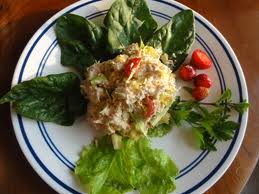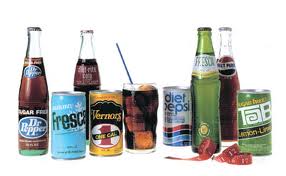Have you ever thought about why you eat, and what you eat, and how much you eat? Something my patients think about a lot.
Part One of Appetite: true hunger. Start with being hungry- real hunger. When you have real hunger you can be satisfied with a bit of meat, or Eggplant Parmesan. This type of hunger comes a complex series of hormones (ghrelin being the most common one named these days). Ghrelin is partially made by your stomach and also in the brain. If you were to eat a very large dinner, then given an IV of ghrelin you would feel quite hungry even though you have a very full stomach.
 One of the popular weight loss operations, called a sleeve gastrectomy, removes much of the stomach, and is thought to remove the major source of ghrelin. But people who have the sleeve gastrectomy, even if over 90 percent of their stomachs are removed, will after a few months, produce as much appetite hormone as before (stomach is an amazing organ). Having hunger satisfied does not mean appetite is diminished however. There is always room for jello (or in my case, the perfect food: ice cream).
One of the popular weight loss operations, called a sleeve gastrectomy, removes much of the stomach, and is thought to remove the major source of ghrelin. But people who have the sleeve gastrectomy, even if over 90 percent of their stomachs are removed, will after a few months, produce as much appetite hormone as before (stomach is an amazing organ). Having hunger satisfied does not mean appetite is diminished however. There is always room for jello (or in my case, the perfect food: ice cream).
Part Two of Appetite: how much to eat. What is the portion size that allows people to be satisfied until the next meal? How much portion satisfies has been tested finding that the more people are given, the more they will eat. If they are given less food, people report that they are just as satisfied, and they don’t notice a return of hunger compared to when given more to eat. In one study people were fed a ten-inch Sub they reported to be as satisfied as if they were given an 8-inch sub sandwich.
How much is eaten depends on several factors if a person has an unlimited selection (as most of us do), some tend to eat far more calories than they will burn over the next few hours. Some eat until they feel “full,” and some eat until they feel “something.” This is typically a formula for becoming fat. Others pay little attention to the meal and then are done (those people are called skinny).
Balloons placed in the stomach, to mimic a full sensation, have worked modestly well at decreasing weight. This works best for those who wish to stop eating when they feel a “sensation.” Most report that the balloon simply increased an uncomfortable feeling of nausea.
Part Three of Appetite: how fast you eat. People who tend to eat fast don’t give a chance for those appetite hormones to dampen down, and tend to over eat. The appetite hormones take 15 to 20 minutes to diminish after the start of feeding – thus people who eat a lot quickly tend to over eat. This is far from universal, as slow eaters can plod along, consuming great quantities of food – much like the tortoise and hare.
Part Four of Appetite: time until hunger after eating. Satiety. Then there is the time before you feel that hunger again –  some think it is when they hear the stomach empty (it isn’t- that is a false signal that can happen many times in an hour). But when the hunger hormones peak depend on a variety of factors – how much bulk you ate, and the amount of protein or fat you ate. Small amounts of protein and fat can inhibit those hormones for as long as two hours (one scoop of chicken salad will prevent those hunger hormones from coming back for at least two hours). This is often referred to as satiety.
some think it is when they hear the stomach empty (it isn’t- that is a false signal that can happen many times in an hour). But when the hunger hormones peak depend on a variety of factors – how much bulk you ate, and the amount of protein or fat you ate. Small amounts of protein and fat can inhibit those hormones for as long as two hours (one scoop of chicken salad will prevent those hunger hormones from coming back for at least two hours). This is often referred to as satiety.
For some people eating a small quantity of food means they will feel hungry again in two hours, for others four. The LAP- BAND works mainly with this mechanism- allowing people to eat a small amount of food, but keeping the appetite suppressed for hours after.
Part Five of Appetite: variety and types of food. A variety of foods increases appetite. Think about trying to eat a lot of ice cream – after a few scoops of that perfect food it is tiresome to the mouth (for lesser mortals). Want to win an ice cream eating contest- eat saltines between the scoops of ice cream. Diet programs based on single food ingredients work, no matter what the ingredient- ice cream diet, steak diet, salami diet, cookie diet, you make up the food diet. The body tires of it and you eat less. But once you leave that diet- and add some more food, you will increase the appetite (I don’t recommend single food diets- if you want to lose weight on a permanent basis you need to change some things you eat on a permanent basis, not just diet for a season).
 Did you know that after a number of research studies, it is fairly conclusive that artificial sweeteners, particularly when added to beverages such as diet soda, increase appetite? The more artificial sweetener a person consumes the more they tend to eat. The mechanism for artificial sweeteners increasing appetite is unclear.
Did you know that after a number of research studies, it is fairly conclusive that artificial sweeteners, particularly when added to beverages such as diet soda, increase appetite? The more artificial sweetener a person consumes the more they tend to eat. The mechanism for artificial sweeteners increasing appetite is unclear.
Some of it is related to the high sweetness factor in many of the drinks. Most people require a balance in the food they eat. Balance sweetness with the other tastes (sour, bitter, savory, or salty). The more sweet drink, the more food it takes to compensate for the sensation to be overcome. Considering a teaspoon of sugar is a mere 15 calories. Splenda is 600 times sweeter than sugar, and Equal is 200 times sweeter, by weight.
People that eat protein for lunch, tend to eat less for dinner. For those who skip lunch and eat a large dinner, eating a bit of protein for lunch is far better. This does not mean a “high protein” diet, or a Spartan protein.
Liquids go through the stomach quickly, and the stomach processes liquids much differently than solids. While liquid protein diets may quench some phases of hunger, the stomach tends to empty quickly.
Increasing fiber in the diet does not increase the time between meals (satiety) but it does make people feel “full,” – which is again, subjective and does not relate to excess weight. Bulking up on salads never works (most salads contain more calories than simple cooked vegetables). The sensation of feeling full has little to do with weight loss, and a lot to do with weight gain.
Snacking, or the famous six small meals a day, never seems to work well. Snacking on high calorie items tends to increase appetite and hunger.
Fats tend to suppress hunger, but a high fat diet is high in dense calories, and tends, over time to increase caloric intake.
Carbohydrates are mixed with regard to appetite. Low glycemic foods, lentils, beans, tend to suppress appetite well. High glycemic items, most breads and grains, tend to cause rebound hunger in a short period of time. One cannot determine a complex carbohydrate from a simple carbohydrate – as glucose, the simplest carbohydrate and what is needed as a fuel source for the brain and body to work cause less rebound hypoglycemia than white bread.
Sadly this means an individual has two responsibilities: determining what they eat (being reasonable) and how much they eat. There is no way to get around that. In summary: avoid artificial sweeteners, especially in liquid form. Do not skip meals, but do not over eat. Snacking with high glycemic items increases appetite. Protein for lunch helps. Fiber is ok for “feeling full” but doesn’t necessarily equate to losing weight.
About Dr Terry Simpson
Dr. Terry Simpson is a Phoenix weight loss surgeon. He encourages his lap-band surgery patients to learn to cook and adopt healthier lifestyles. His goal is to use culinary medicine to keep patients out of his operating room. www.drterrysimpson.com

Leave a Reply